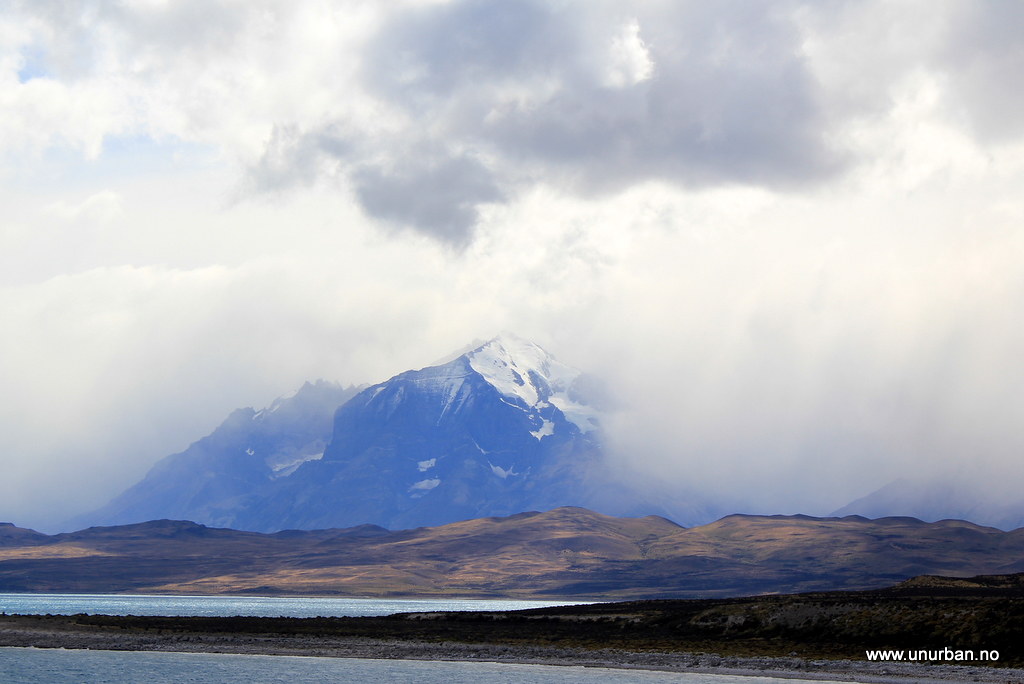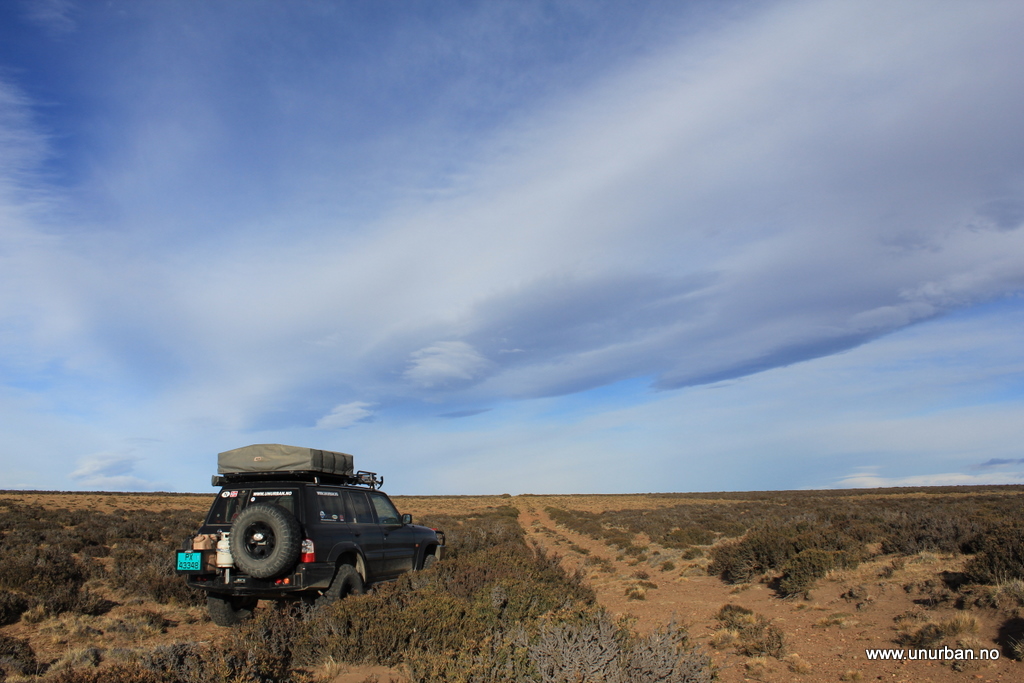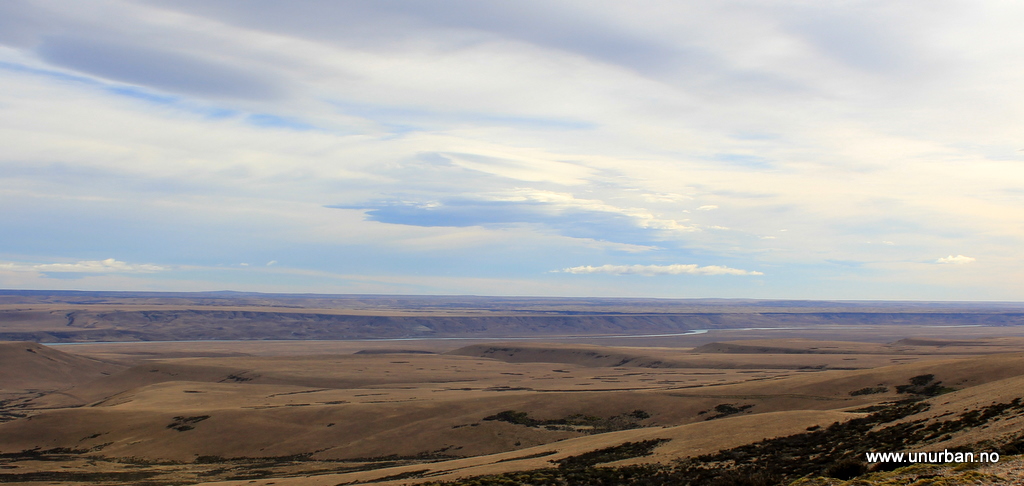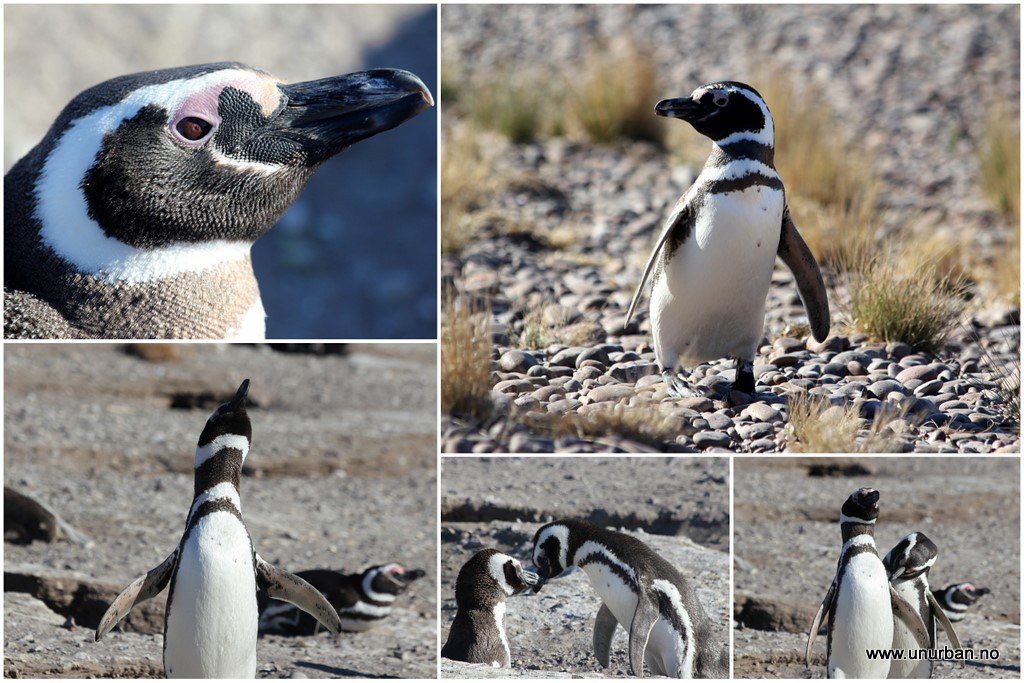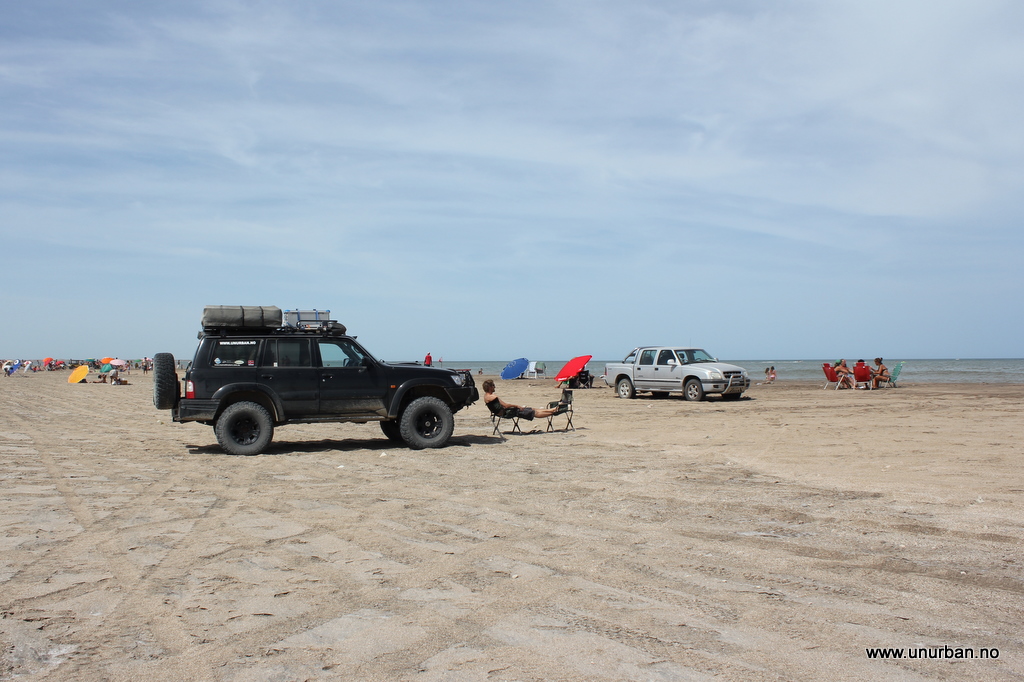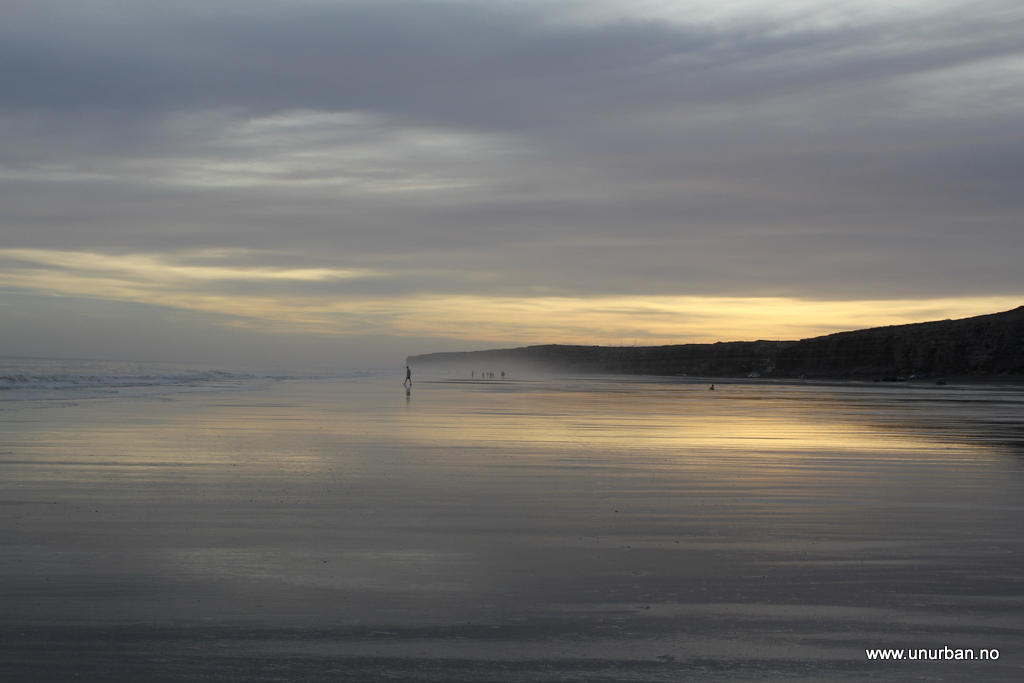South Pole to Norway Drive?
...could possibly be the new name of our blog. I guess it depends if we can get through Northern Africa relatively safe and sound. At least the first part is officially done. I started on the South Pole in a 6x6 Ford E-350.
.

.
The company we worked for in Antarctica had driven two vehicles into the South Pole this season as support vehicles for two projects. The first one was the support vehicle for the Amundsen anniversary (one hundred years since Roald Amundsen was the first man on the geographical South Pole) and for the expeditions arriving for this specific date, the 14th of December. The second on was the support vehicle for Pat Farmer, and Australian who jogged (!) from the North Pole to the South Pole. At the end of the season both vehicles were to be driven back to Union Glacier camp, where ALE has its base. Union Glacier is just next to Hercules Inlet on the coast in the Chilean sector, and where most of the ski-all-the-way-to-the-south-pole expeditions start. Some weeks before a list of possible drivers had been put together, and yes, a kitchen assistant with som driving experience was on the list! Quite exiting. In the end we were two ALE mechanics, an expedition guide, and a kitchen assistant that packed their bags and got on the DC-3 heading to the South Pole.
.
The South Pole is at almost 3000 meters altitude, and it is significantly colder than at Union Glacier. The days when we were there to prepare the trip, the thermometer showed more or less 30 below (celsius). Shortly after we landed at the Pole, the second vehicle arrived with Pat Farmer, and it came into camp in a big, black cloud of smoke. Not good…. The turbo went a few kilometers out of camp, and a field repair had lasted only a few kilometers more before it broke completely and probably sent some metal particles into the cylinders (at least, that was the idea.. ). Car number two was moved to the category “overwintering”.
.
We were four people there to drive two vehicles back to Union Glacier. The optimal number for these conditions are three driving in shifts, but four is probably too much. Needless to say, I was quite nervous for my seat, but one of the mechanics stayed behind to take down camp for the winter. Phew… And the preparations continued.
.
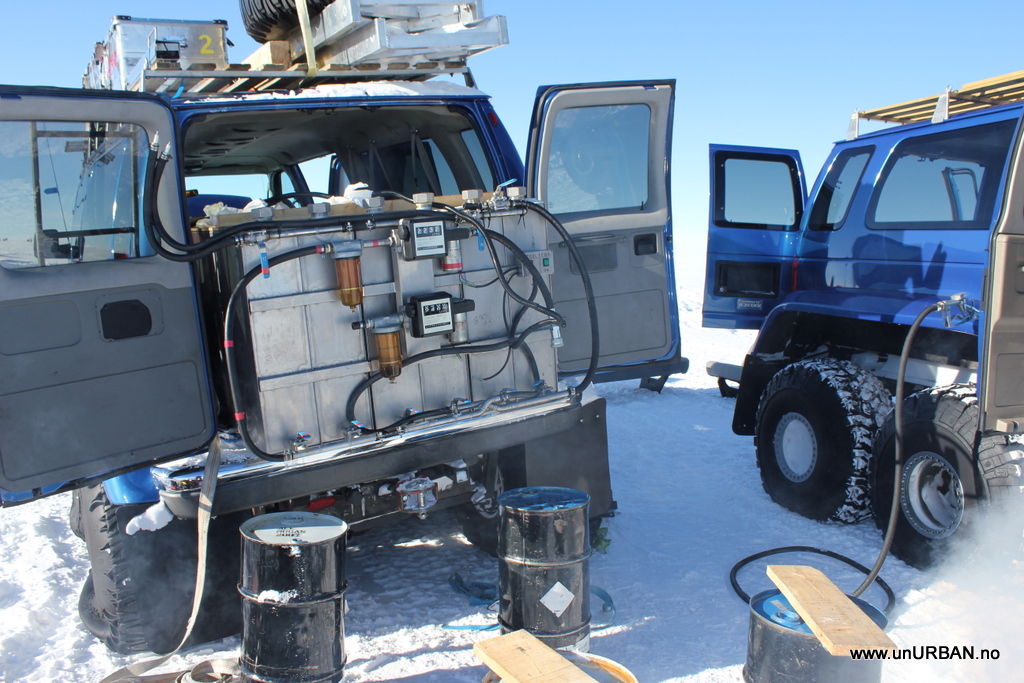
.
Always smart to bring som extra fuel. This tank holds about 1200 liters, that is six 200 liters fuel drums. Fuel at the South Pole is flown in by aircraft, and is extremely expensive. I think I heard that a client would have to pay about 14000 USD for one of these drums at the Pole. We filled seven drums before we left!
.

.
Our camp was about one kilometer out from the Amundsen-Scott base at the Pole, but of course we had to do a round at the Pole before we headed north. It was a strange and surreal feeling to “drive around the world” before we drove out from the base and into more or less nothing…
.

.
“The Road” out from the South Pole. As the other car recently came in this way, the tracks were clearly visible the first part of the trip.
.

.
Proud unURBAN crew at “work”. Couldn't stop thinking about how much this would cost if I had been a client of ALE. It could have been worth it, though…
.
The trip went relatively undramatic across the plateu, and it is the absence of things to see that actually make the views so breathtaking. The first day you're just grinning and driving, but on the second day the reflections on where you are and what you're doing start coming to you. Still, in a nice heated car with the iPod connected to the stereo, cruising through an ice-dessert in a big 6x6 van with air suspension, the word surreal keeps popping up in my mind.
.
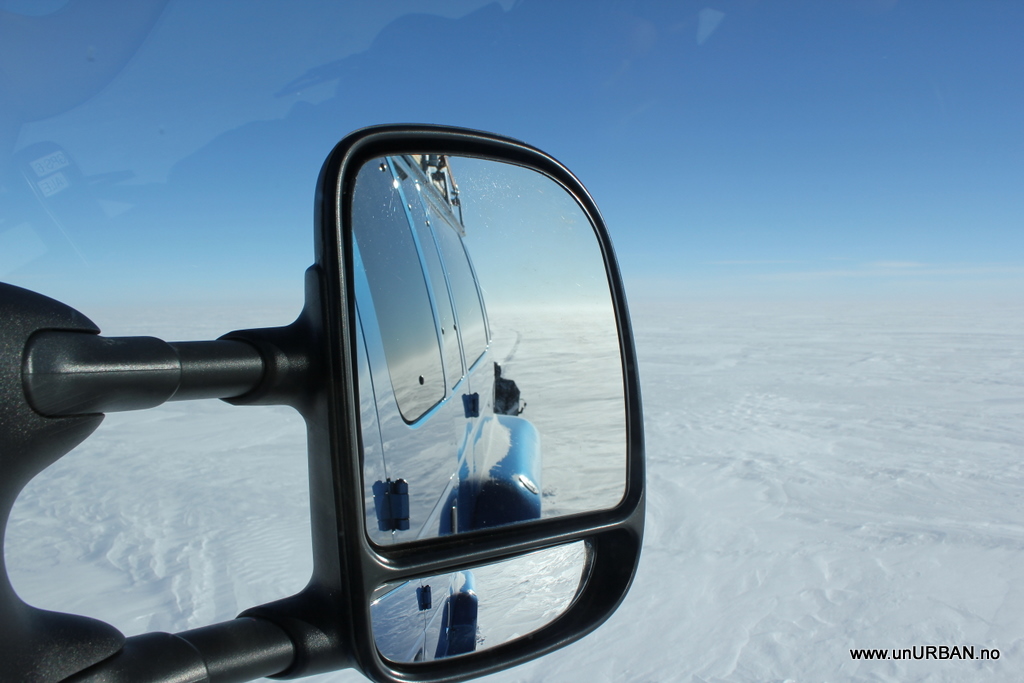
.
Nothing but snow in all directions
.
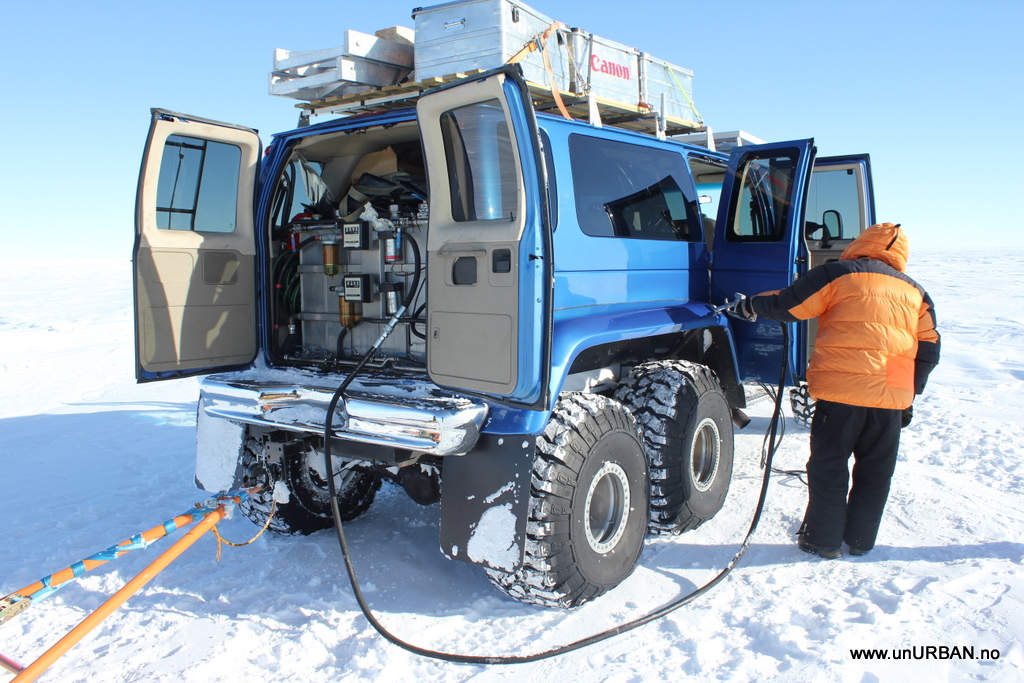
.
Convenient to have your own gas station in the back of your car when you are driving across Antarctica.
.
Just after this picture was taken we had to stop and improvise a new slide. We brought a ski-doo with us back from the Pole, mainly to save weight for the planes, but also as a “second vehicle”. If something would have happened however, we would probably have been picked up by a Twin Otter. Anyway, the slide shredded about half way home, but some plywood got us going again.
.
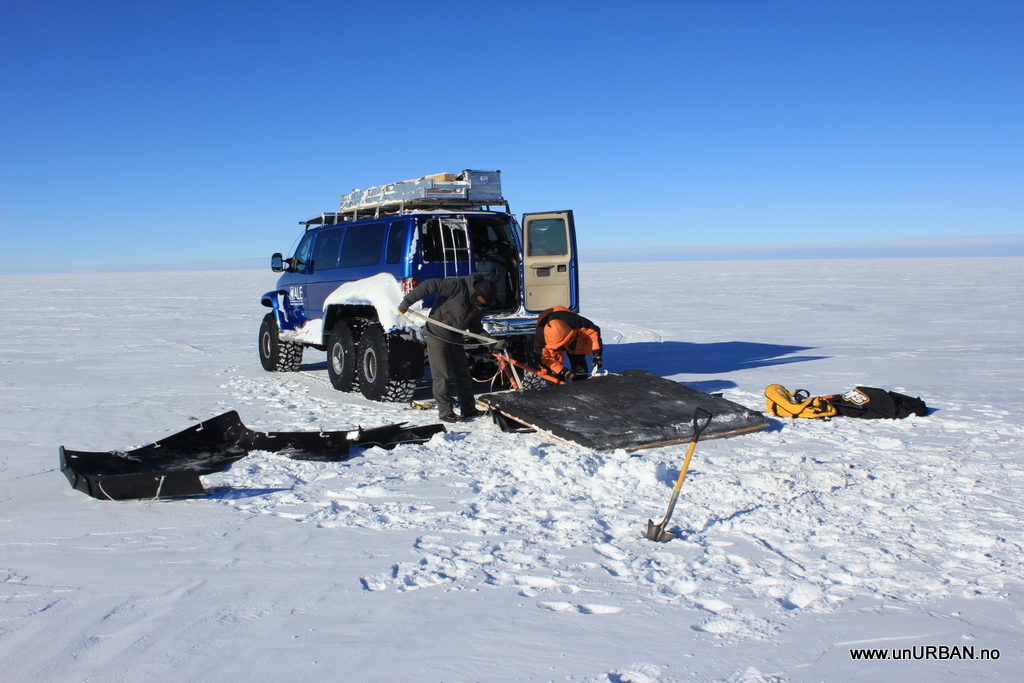
.

.
On the way back we also came across one of the expeditions on their way back from the South Pole. This season several expeditions tried to ski unsupported to the Pole and back to the starting point (by the coast). These guys had camped on the road, and I guess they were quite surprised when we pulled over next to their tent for a chat.
.
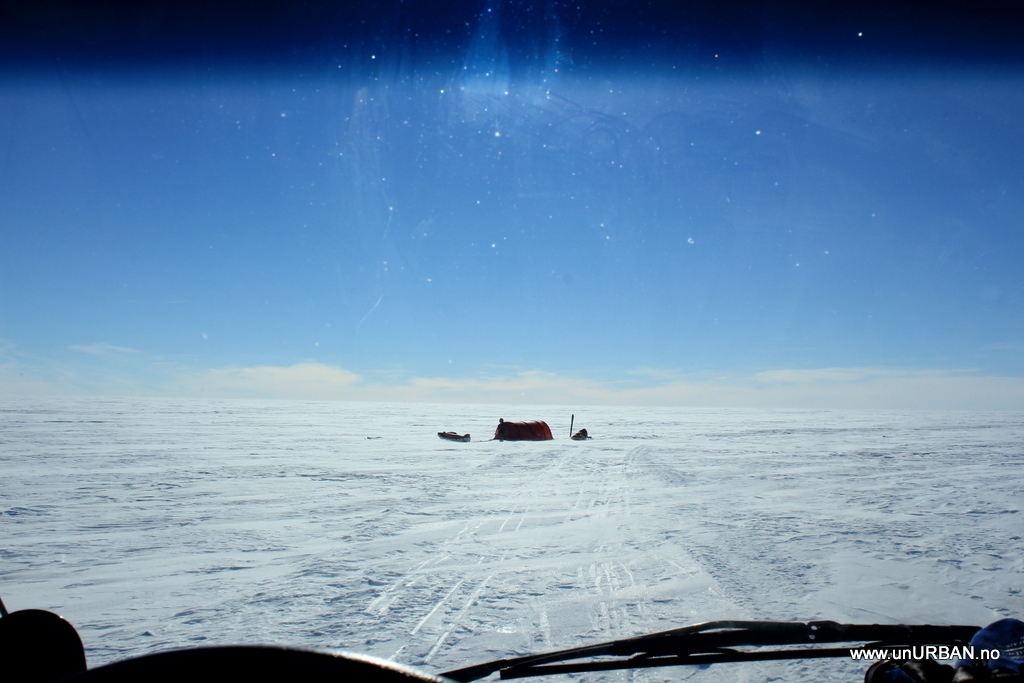
.
After two days of driving we saw the first mountains. Union Glacier in in the Herritage Range, and we could see the mountains from a long distance. It was stunning to “take off” from the plateu and drive in between mountains. We know that where the glacier runs between and next to mountains, is where we find crevasses. The route we were driving is considered relatively safe, but of course, on a glacier you can never be 100% safe. Some years earlier a Brazilian research expedition had traveled the same route with a GPR device (Ground Penetrating Radar), and waypointed the dangerous areas. With these data we could be extra careful (drive around..) where we knew there were crevasses.
.

.
The Antarctic Plateu with so much of nothing is facinating, but I think driving in between the mountains was my highlight on the trip. Here you find yourself driving up hills and over small passes, and view out of the windshield is magic. This last part is a more used route, and a couple of times every season there is a tractor train with fuel going out this way to a fuel depot for the Twin Otters flying to the Pole. In an earlier post we had a picture of one of these “trains” leaving camp with sledges loaded with fuel. The track after these sledges actually becomes quite a good road, and at some places we were probably doing 50 kilometers an hour.
.
Well. Even the drive of a lifetime comes to an end, and we drove into Union Glacier Camp 53 hours and about 1200 kilometer after we left the geographic South Pole.
.
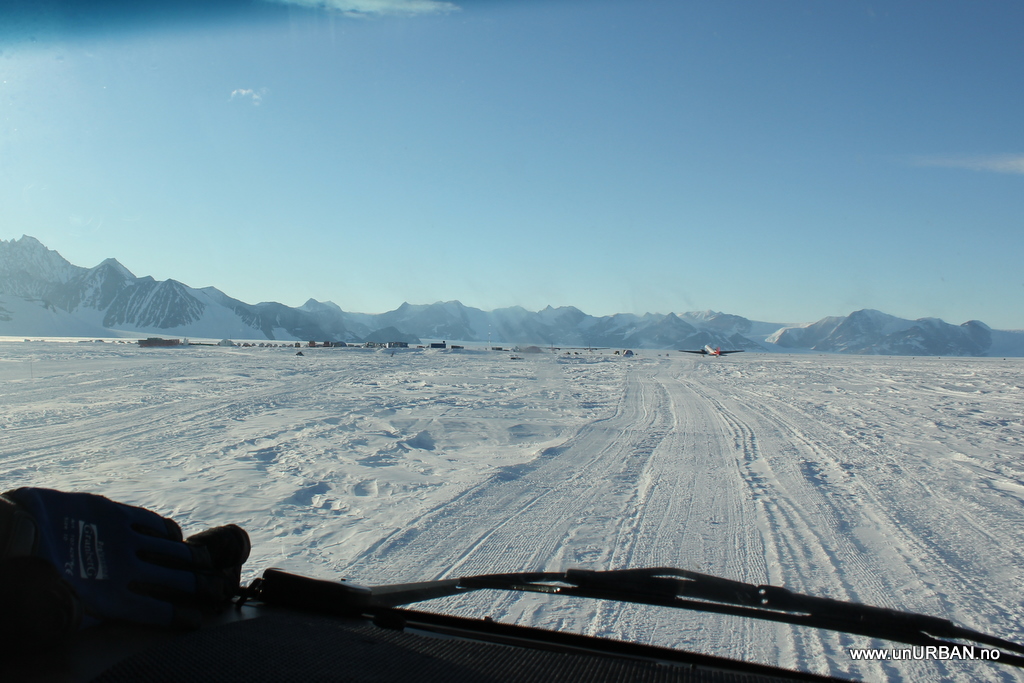
.
This trip was a fantastic experience, and I cannot think of a better bonus for two months of doing dishes!! The first part of the South Pole to Norway drive is hereby concluded.
.
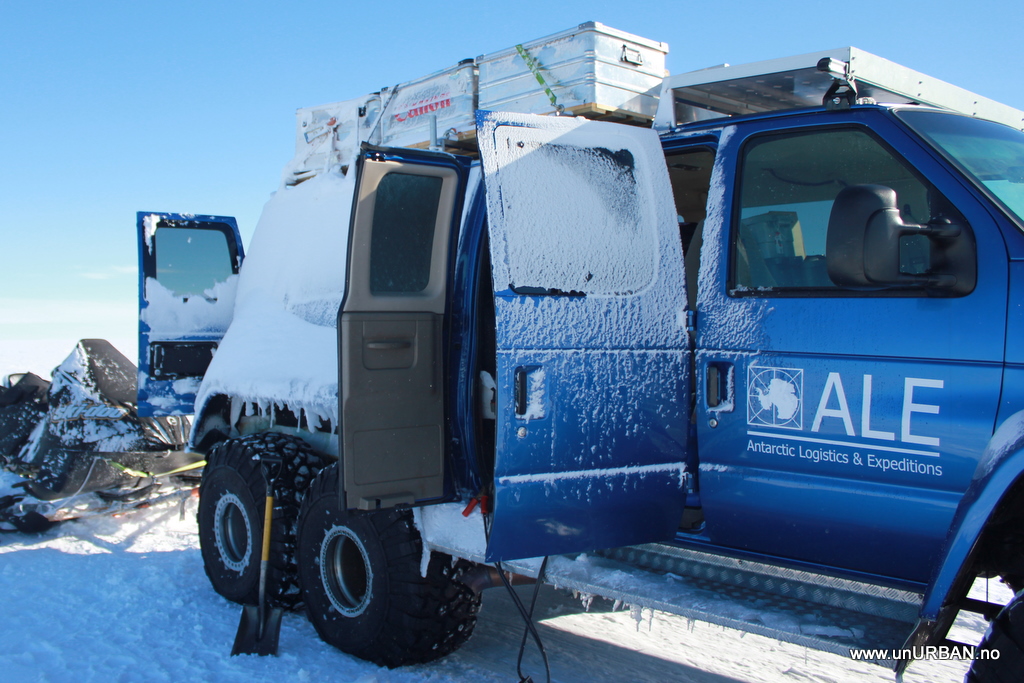
.
E
...could possibly be the new name of our blog. I guess it depends if we can get through Northern Africa relatively safe and sound. At least the first part is officially done. I started on the South Pole in a 6x6 Ford E-350.
.

.
The company we worked for in Antarctica had driven two vehicles into the South Pole this season as support vehicles for two projects. The first one was the support vehicle for the Amundsen anniversary (one hundred years since Roald Amundsen was the first man on the geographical South Pole) and for the expeditions arriving for this specific date, the 14th of December. The second on was the support vehicle for Pat Farmer, and Australian who jogged (!) from the North Pole to the South Pole. At the end of the season both vehicles were to be driven back to Union Glacier camp, where ALE has its base. Union Glacier is just next to Hercules Inlet on the coast in the Chilean sector, and where most of the ski-all-the-way-to-the-south-pole expeditions start. Some weeks before a list of possible drivers had been put together, and yes, a kitchen assistant with som driving experience was on the list! Quite exiting. In the end we were two ALE mechanics, an expedition guide, and a kitchen assistant that packed their bags and got on the DC-3 heading to the South Pole.
.
The South Pole is at almost 3000 meters altitude, and it is significantly colder than at Union Glacier. The days when we were there to prepare the trip, the thermometer showed more or less 30 below (celsius). Shortly after we landed at the Pole, the second vehicle arrived with Pat Farmer, and it came into camp in a big, black cloud of smoke. Not good…. The turbo went a few kilometers out of camp, and a field repair had lasted only a few kilometers more before it broke completely and probably sent some metal particles into the cylinders (at least, that was the idea.. ). Car number two was moved to the category “overwintering”.
.
We were four people there to drive two vehicles back to Union Glacier. The optimal number for these conditions are three driving in shifts, but four is probably too much. Needless to say, I was quite nervous for my seat, but one of the mechanics stayed behind to take down camp for the winter. Phew… And the preparations continued.
.

.
Always smart to bring som extra fuel. This tank holds about 1200 liters, that is six 200 liters fuel drums. Fuel at the South Pole is flown in by aircraft, and is extremely expensive. I think I heard that a client would have to pay about 14000 USD for one of these drums at the Pole. We filled seven drums before we left!
.

.
Our camp was about one kilometer out from the Amundsen-Scott base at the Pole, but of course we had to do a round at the Pole before we headed north. It was a strange and surreal feeling to “drive around the world” before we drove out from the base and into more or less nothing…
.

.
“The Road” out from the South Pole. As the other car recently came in this way, the tracks were clearly visible the first part of the trip.
.

.
Proud unURBAN crew at “work”. Couldn't stop thinking about how much this would cost if I had been a client of ALE. It could have been worth it, though…
.
The trip went relatively undramatic across the plateu, and it is the absence of things to see that actually make the views so breathtaking. The first day you're just grinning and driving, but on the second day the reflections on where you are and what you're doing start coming to you. Still, in a nice heated car with the iPod connected to the stereo, cruising through an ice-dessert in a big 6x6 van with air suspension, the word surreal keeps popping up in my mind.
.

.
Nothing but snow in all directions
.

.
Convenient to have your own gas station in the back of your car when you are driving across Antarctica.
.
Just after this picture was taken we had to stop and improvise a new slide. We brought a ski-doo with us back from the Pole, mainly to save weight for the planes, but also as a “second vehicle”. If something would have happened however, we would probably have been picked up by a Twin Otter. Anyway, the slide shredded about half way home, but some plywood got us going again.
.

.

.
On the way back we also came across one of the expeditions on their way back from the South Pole. This season several expeditions tried to ski unsupported to the Pole and back to the starting point (by the coast). These guys had camped on the road, and I guess they were quite surprised when we pulled over next to their tent for a chat.
.

.
After two days of driving we saw the first mountains. Union Glacier in in the Herritage Range, and we could see the mountains from a long distance. It was stunning to “take off” from the plateu and drive in between mountains. We know that where the glacier runs between and next to mountains, is where we find crevasses. The route we were driving is considered relatively safe, but of course, on a glacier you can never be 100% safe. Some years earlier a Brazilian research expedition had traveled the same route with a GPR device (Ground Penetrating Radar), and waypointed the dangerous areas. With these data we could be extra careful (drive around..) where we knew there were crevasses.
.

.
The Antarctic Plateu with so much of nothing is facinating, but I think driving in between the mountains was my highlight on the trip. Here you find yourself driving up hills and over small passes, and view out of the windshield is magic. This last part is a more used route, and a couple of times every season there is a tractor train with fuel going out this way to a fuel depot for the Twin Otters flying to the Pole. In an earlier post we had a picture of one of these “trains” leaving camp with sledges loaded with fuel. The track after these sledges actually becomes quite a good road, and at some places we were probably doing 50 kilometers an hour.
.
Well. Even the drive of a lifetime comes to an end, and we drove into Union Glacier Camp 53 hours and about 1200 kilometer after we left the geographic South Pole.
.

.
This trip was a fantastic experience, and I cannot think of a better bonus for two months of doing dishes!! The first part of the South Pole to Norway drive is hereby concluded.
.

.
E

